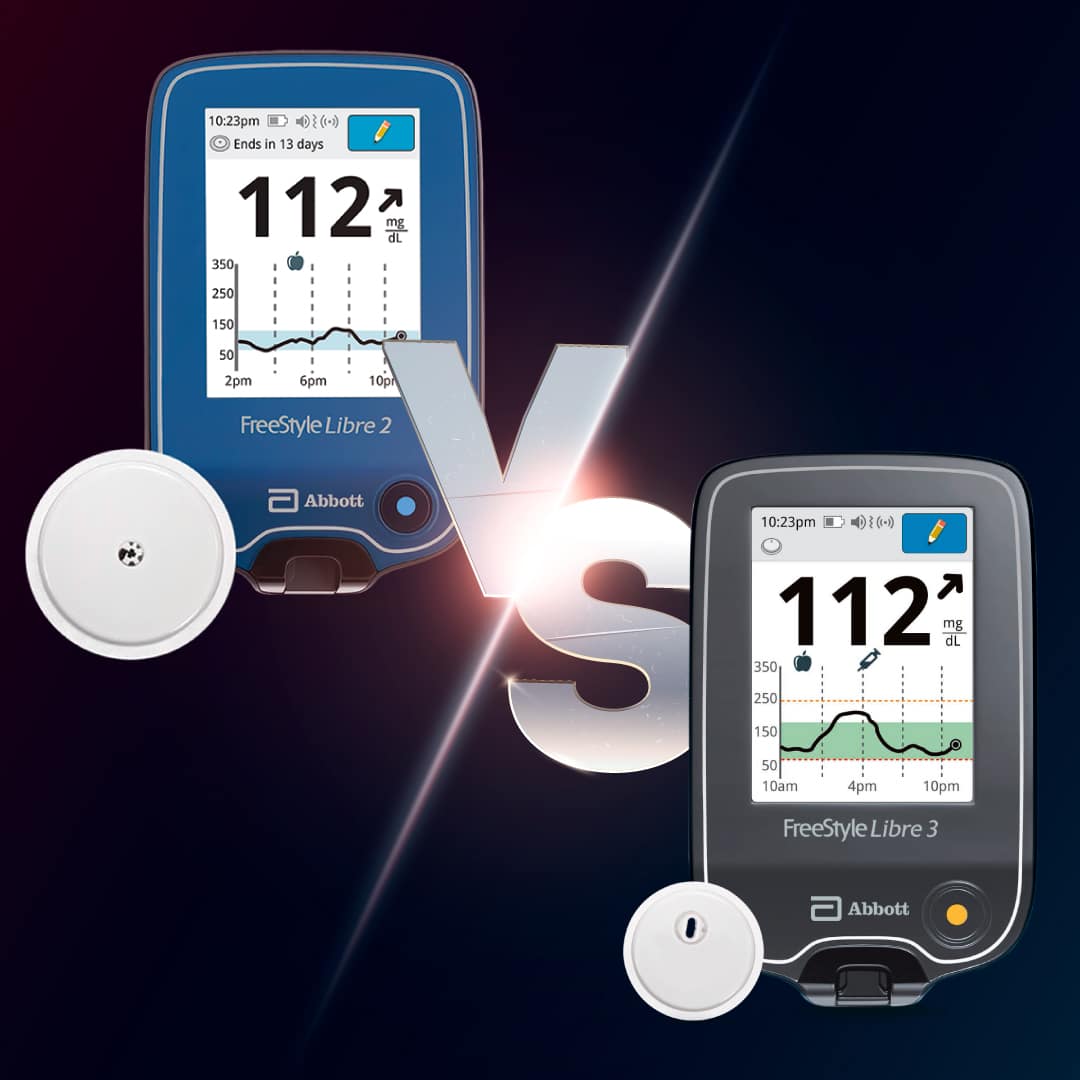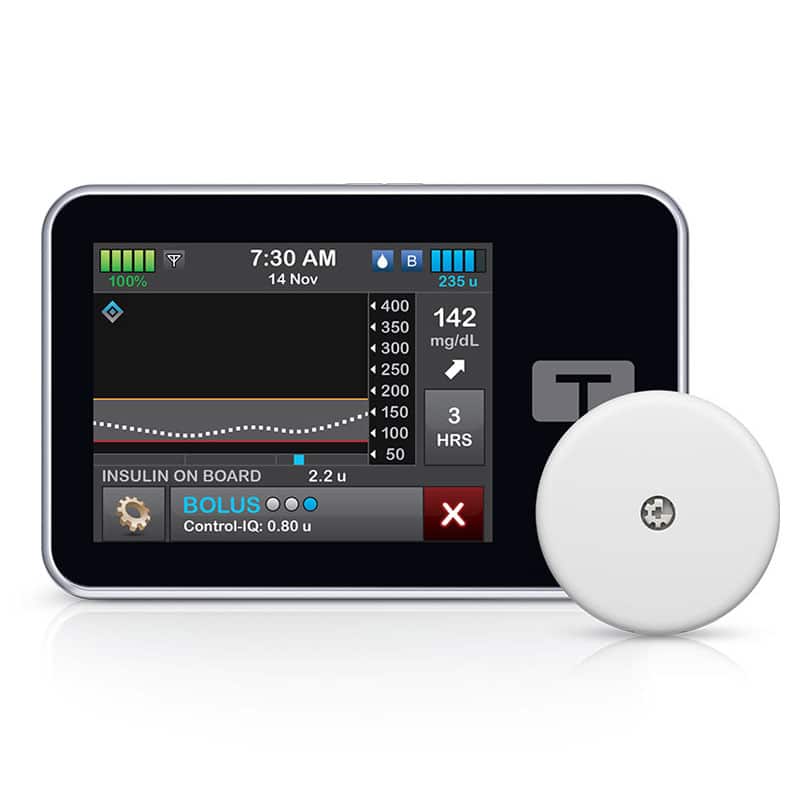
These days, continuous glucose monitoring (CGM) systems are a huge deal in the diabetes world, and few businesses in this space are more prominent than Abbott. This company’s FreeStyle Libre line includes some of the most widely used CGM systems in the world.
The two newest products available under this brand are the FreeStyle Libre 2 and 3, both of which can make life easier for people living with diabetes. Are you wondering which Abbott CGM is the best fit for your needs, or are you simply asking yourself “what is the difference between FreeStyle Libre 2 and 3?” Before you invest in a new CGM system, take a look at ADS’ guide to the FreeStyle Libre 3 vs FreeStyle Libre 2.
CGM 101
First, let’s review the basic principles behind CGM systems. These devices help people living with type 1 or type 2 diabetes keep an eye on their blood glucose levels while reducing finger stick tests.
CGM systems use wearable sensors to accomplish this goal. A CGM sensor sits just under a user’s skin and regularly measures their glucose levels. Once the sensor has collected that data, a transmitter sends it to a monitor or compatible smart device.
Even the best CGM systems can’t eliminate your need for traditional blood glucose tests. For example, you’ll need to fall back on this testing method if your glucose readings don’t align with your symptoms. But when you aren’t dealing with situations like these, CGMs can simplify your approach to diabetes management.
What is the Difference Between FreeStyle Libre 2 and 3?
When comparing the differences between FreeStyle Libre 2 and Libre 3, a great place to start is the sensor size. The FreeStyle Libre 2’s sensors certainly aren’t obtrusive—they’re about as thick as two quarters stacked on top of each other. But the FreeStyle Libre 3’s sensors are smaller than two stacked pennies,* making them even more discreet. And other perks offered by the FreeStyle Libre 3 include:
- A one-piece applicator for easy sensor application*
- 14 days of sensor memory storage† (compared to eight hours‡ for the FreeStyle Libre 2)
- A 33-foot Bluetooth range (compared to 20 feet for the FreeStyle Libre 2)
Of course, you’ll also want to understand the similarities between the FreeStyle Libre 2 vs FreeStyle Libre 3. When you buy either of these devices, you’ll get a 14-day sensor lifespan and glucose readings every minute.†,‡ Plus, both FreeStyle Libre systems are more affordable*,¶ than other devices in this category. Both products are indicated for management of diabetes in persons ages 4 and older and for use by women with diabetes who are pregnant.
System Overviews
That should give you a broad understanding of the difference between FreeStyle Libre 2 and 3, but there’s still more to learn about these products. Let’s continue by taking a closer look at Abbott’s most advanced CGM systems.

FreeStyle Libre 2
If you’ve been managing diabetes for a while, you know how inconvenient finger stick tests can be—but the FreeStyle Libre 2 system can help. While this system can’t do away with “traditional” blood sugar testing, it will allow you to check your glucose levels with a painless scan§,|| under normal circumstances.
Along with this ability, the FreeStyle Libre 2:
- Provides highly accurate# glucose readings
- Offers customizable alarms for glucose highs and lows
- Works with a dedicated reader and compatible smart devices**
- Bonus: As of January 2024, you can also use the FreeStyle Libre 2 Plus sensor with the FreeStyle Libre 2. It’s Libre’s first sensor that integrates with a pump, namely the Tandem T:Slim.
FreeStyle Libre 3
Like its predecessor, the FreeStyle Libre 3 system provides finger stick-free†† glucose monitoring capabilities. But when comparing the FreeStyle Libre 2 vs 3, it’s important to note that the newer product offers some unique parks—such as the smallest,* thinnest‡‡ and discreet sensor ever used in a CGM system and an easy to apply 1 piece applicator. The FreeStyle Libre 3 also:
- Comes with optional real-time glucose alarms¶¶
- Provides greater accuracy** than any other 14-day CGM system
- Is more affordable than any other CGM—even without insurance coverage*,§§
- Works with the FreeStyle Libre 3|||| and LibreLinkUp## apps
Get Your FreeStyle Libre From ADS
While you can spend a considerable amount of time weighing the FreeStyle Libre 3 vs FreeStyle Libre 2, the most important thing to remember is that both CGM systems will deliver exceptional results. Though it’s wise to understand the difference between FreeStyle Libre 2 and 3, you probably won’t regret your choice either way.
Once you’ve considered the pros and cons of the FreeStyle Libre 2 vs FreeStyle Libre 3, it’s time to make another decision—where you want to buy your CGM system of choice. ADS offers both of these systems to our customers; regardless of your selection, you’ll get quick shipping and the best customer service in the industry. Order a FreeStyle Libre CGM (or some of the many other products we offer) today!
Superscript Information
*Data on File. Abbott Diabetes Care.
†FreeStyle Libre 3 User’s Manual.
‡FreeStyle Libre 2 User’s Manual.
¶Based on a comparison of list prices of the FreeStyle Libre personal CGM systems versus competitors’ CGM systems, assuming annual use of one receiver (or equivalent hardware) and quantity of transmitters and/or sensors according to use life. The actual cost to patients may or may not be lower than other CGM systems, depending on the amount covered by insurance, if any.
§Data from this study was collected with the outside US version of FreeStyle Libre 14 day system. FreeStyle Libre 2 has the same features as FreeStyle Libre 14 day system with optional, real-time glucose alarms. Therefore, the study data is applicable to both products.
||Haak, Thomas, et al. “Flash Glucose-Sensing Technology as a Replacement for Blood Glucose Monitoring for the Management of Insulin-treated Type 2 Diabetes: a Multicentre, Open-label Randomised Controlled Trial.” Diabetes Therapy 8, no. 1 (2017): 55-73. https://doi.org/10.1007/s13300-016-0223-6.
#High levels of vitamin C may affect the accuracy of sensor readings. Refer to the FreeStyle Libre 2 user manual for more information.
**The FreeStyle Libre 2 app is only compatible with certain mobile devices and operating systems. Please check Abbott’s compatibility guide for more information about device compatibility before using the app. Use of the FreeStyle Libre 2 app requires registration with LibreView.
††Fingersticks are required if your glucose alarms and readings do not match symptoms or when you see Check Blood Glucose symbol during the first twelve hours.
‡‡Among patient-applied sensors.
¶¶Notifications will only be received when alarms are turned on and the sensor is within 33 feet unobstructed of the reading device. You must enable the appropriate settings on your smartphone to receive alarms and alerts, see the FreeStyle Libre 3 User’s Manual for more information.
§§Based on prescription claims for commercially insured patients starting on the FreeStyle Libre personal CGM systems compared to competitor CGMs. Does not include Medicare, Medicaid, uninsured, and other federal or state healthcare program patients. The actual cost to patients may or may not be lower than other CGM systems, depending on the amount covered by insurance, if any.
||||The FreeStyle Libre 3 app is only compatible with certain mobile devices and operating systems. Please check Abbott’s compatibility guide for more information about device compatibility before using the app.##The LibreLinkUp app is only compatible with certain mobile devices and operating systems. Please check www.librelinkup.com for more information about device compatibility before using the app. Use of the LibreLinkUp app requires registration with LibreView. LibreLinkUp is not intended to be used for dosing decisions. The user should follow instructions on the continuous glucose monitoring system. LibreLinkUp is not intended to replace self-monitoring practices as advised by a physician.
